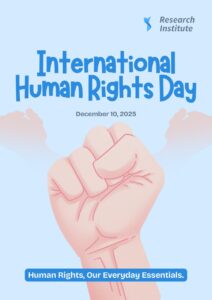Executive Summary
Since the 2021 military coup in Myanmar, over 40,000 refugees have fled from Myanmar, particularly in regions like Chin State and Sagaing Region, to Mizoram, India. Many of these refugees are children whose education is disrupted due to displacement. The Mizoram govern- ment has granted access to public schools for more than 6,000 Burmese refugee children as of October 2022, however, numerous challenges persist. The purpose of the paper is to explore multifaceted dimensions of access to formal and informal education of Burmese refugee children in Mizoram from a phenomenological perspective. In the context of non-formal education, the study examines camp-specific initiatives offering Myanmar curriculum under the National Unity Government (NUG) interim education program that contribute to the educational landscape of Burmese refugee children. The study highlights the need for a comprehensive approach to address these challenges and ensure equitable access to quality education for Burmese refugee children from the host country. The qualitative phenomenolo- gical research approach was used. The primary data was collected through observations and in-depth interviews with various stakeholders, including refugee children, teachers, parents and others involved in refugee education.

